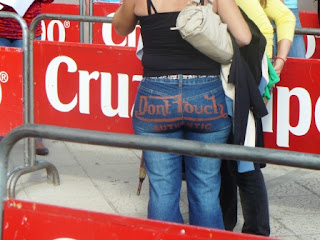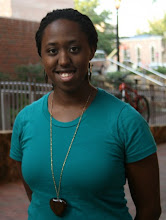
I'm still adjusting to the six-hour time difference, so I'm taking full advantage of the
siesta. From 2 to 5 p.m. in Spain, everything except some restaurants close and people take a nap or rest. No one shops or goes to the park. It's as if
Sevilla becomes a ghost town. After my
senora Ines serves lunch and we watch a movie on channel
cuatro, I go to bed. I sleep until night falls. Then I'm ready to take part in the
Sevillian nightlife.
Thursday, some friends and I visited a stand-and-talk bar, or at least that's what I'll call it. The
entrance to Chile terraza was free and the drinks costs around 5.50 Euros or roughly $7.65. (Sidebar: The official drinking age in Spain in 18, three years younger than in the U.S. But people usually start drinking at a younger age.) The locals looked like they were out of a movie or, for the lack of a better comparison, a sophisticated music video. The men had perfectly gelled hair, wore ties and had freshly-pressed button-down shirts tucked into their slim-fitting dark jeans. The women wore the latest fashion - dressy flats or stilettos, baby doll dresses, and skinny jeans.) My friends and I looked a tad under dressed in our T-shirts, tank tops, jean skirts and Bermuda shorts. We wanted to fit in, so we opted not to take pictures (which is expected of tourists), but to buy drinks and converse with the locals. We finally got up enough nerve to talk with a few 30-something guys, who said we spoke Spanish well for being in the country
only two days. They told us that
Sevillanos party hard from Thursday to Saturday from midnight to 5 a.m. When we decided to leave
Chile at 3:30, our new friends thought we were leaving too early. We were a little surprised to see that the bar's parking lot was full of people standing near their diminutive cars, talking and drinking. The scene didn't vary much from that outside of a U.S. club.
Other observation(s):
1. It's hot. The climate here isn't too different than that of North Carolina, but the temperature hovers around 100 degrees Fahrenheit in high afternoon. I think Spaniards take siestas later in the afternoon because the heat has drained them of their energy. I'll research that theory later.
2. My roommate,
Kareemah, and I have received a few strange looks from locals. I don't know if it's because we are Americans or African Americans. When we were walking to the bar, a man asked
Kareemah if she was a prostitute. In our required reading,
The New Spaniards, John Hooper writes that there are few people of African descent in Spain. Most are poor so some women resort to selling their bodies to earn a living. Perhaps, that man thought we were apart of that group.
3. Every lunch and dinner consists of salad, bread and cheese, an entree and a dessert. Dessert can be anything from a fruit to a a cup of coffee and a cake- or cookie-like pastry.
4. I have yet to see a house. There are many apartment complexes and skyscrapers. Homes are apartments that rest atop of stores. It seems that everything is built vertically to maximize the space.
5. I knew that
futbol or soccer is taken very seriously, but I didn't realize how much soccer players or
futbolistas are heralded here. A few soccer players recently collapsed on the field and died shortly after. Antonio
Puerta, a
Sevilla Futbol Club player, died last week and
Sevillanos attended his funeral Wednesday in droves. I had no idea why certain streets were packed until I saw the evening news.
Futbolistas in Spain are national idols similar to basketball players in the U.S.




















